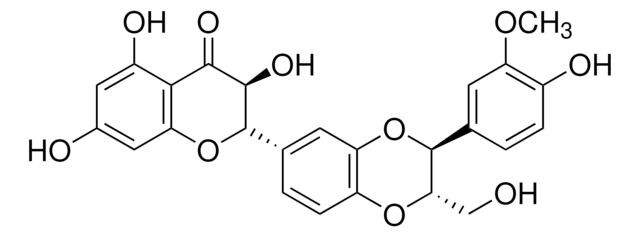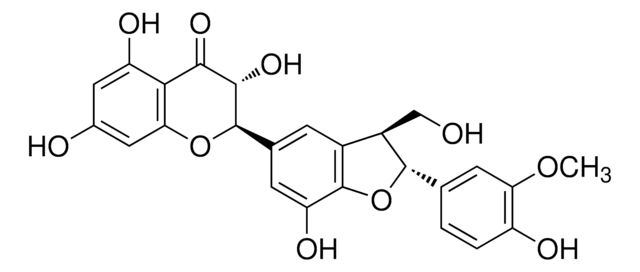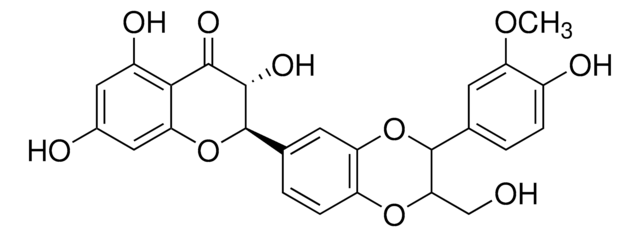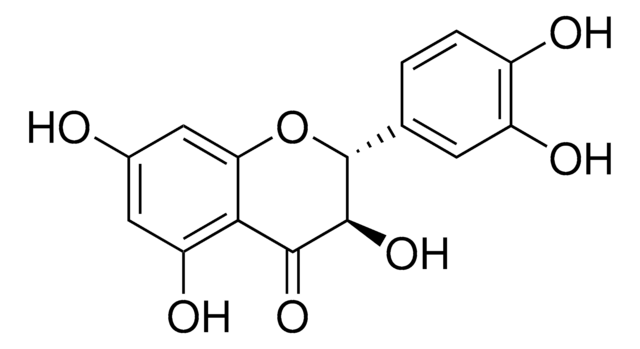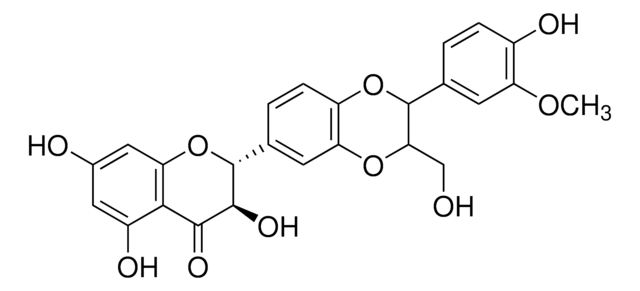S0292
Silymarin
flavonolignans
Synonym(e):
flavolignans
About This Item
Empfohlene Produkte
Biologische Quelle
plant (Silybum marianum)
Qualitätsniveau
Form
powder
Methode(n)
toxicology assay: suitable
Anwendung(en)
microbiology
Lagertemp.
−20°C
InChI
1S/C25H22O10/c1-32-17-6-11(2-4-14(17)28)24-20(10-26)33-16-5-3-12(7-18(16)34-24)25-23(31)22(30)21-15(29)8-13(27)9-19(21)35-25/h2-9,20,23-29,31H,10H2,1H3
InChIKey
SEBFKMXJBCUCAI-UHFFFAOYSA-N
Allgemeine Beschreibung
Anwendung
- its in vitro antiviral, antibacterial, antifungal activities and cytotoxicity
- its effect of silymarin on bladder contractions in cyclophosphamide (CYP)-induced cystitis rat model
- its effect on liver toxication induced by Fumonisin B1 in mice
Biochem./physiol. Wirkung
Sonstige Hinweise
Lagerklassenschlüssel
11 - Combustible Solids
WGK
WGK 3
Flammpunkt (°F)
Not applicable
Flammpunkt (°C)
Not applicable
Persönliche Schutzausrüstung
Eyeshields, Gloves, type N95 (US)
Hier finden Sie alle aktuellen Versionen:
Besitzen Sie dieses Produkt bereits?
In der Dokumentenbibliothek finden Sie die Dokumentation zu den Produkten, die Sie kürzlich erworben haben.
Kunden haben sich ebenfalls angesehen
Artikel
Antioxidants protect biological systems from oxidative damage produced by oxygen-containing free radicals and from redoxactive transition metal ions such as iron, copper, and cadmium.
Unser Team von Wissenschaftlern verfügt über Erfahrung in allen Forschungsbereichen einschließlich Life Science, Materialwissenschaften, chemischer Synthese, Chromatographie, Analytik und vielen mehr..
Setzen Sie sich mit dem technischen Dienst in Verbindung.